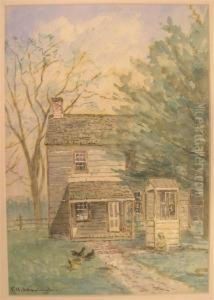F. H. Shapleigh Paintings
Frank Henry Shapleigh, commonly known as F.H. Shapleigh, was an American artist born on July 11, 1847, in Boston, Massachusetts. Shapleigh was known for his landscape paintings and was particularly recognized for his works depicting scenes from the White Mountains of New Hampshire, as well as other areas of New England and the American West.
In pursuit of his artistic development, Shapleigh studied at the Lowell Institute in Boston and later continued his education in Europe. In Paris, he became a student under the guidance of renowned artists Emile Lambinet and Adolphe Yvon. During his time in Europe, he was exposed to various artistic movements and techniques that were to influence his work throughout his career.
Shapleigh’s style was rooted in the Hudson River School, a mid-19th century American art movement embodied by a group of landscape painters who were influenced by romanticism. The artists of this school were known for their realistic and detailed portrayals of American landscapes, often imbued with themes of nature's grandeur and sublimity. Shapleigh’s paintings were characterized by their attention to detail, use of light, and a soft, yet precise, portrayal of nature.
After returning to the United States, Shapleigh spent much of his time in the White Mountains. His works often featured the region's majestic peaks, tranquil valleys, and rustic buildings. Notable pieces from this period include 'Mount Lafayette in Winter' and 'Old Jackson House, Portsmouth, N.H.' Shapleigh’s paintings from the White Mountains are considered important historical records of the region during the 19th century.
Beyond New England, Shapleigh traveled to the American West in the late 1870s, where he painted scenes of the newly established Yellowstone National Park and other Western landscapes. These works contributed to the nation's appreciation of the West's natural beauty and helped foster an early sense of conservation and national pride in America's natural wonders.
F.H. Shapleigh's contribution to American art continued until his death on May 6, 1906, in Jackson, New Hampshire. His works are preserved in various institutions and collections, including the New Hampshire Historical Society and the Portland Museum of Art, serving as a testament to his skill and affection for the American landscape.
